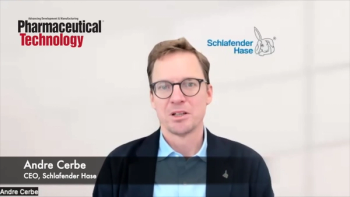
- Pharmaceutical Technology-09-02-2018
- Volume 42
- Issue 9
Rethinking Cleaning Validation for API Manufacturing
This article focuses on applying new and traditional techniques to design a cleaning process, ensure the surfaces are clean, and develop rinse solution analysis to continuously monitor cleaning performance.
Cleaning validation is a regulatory requirement worldwide and an integral process step within the manufacturing of active pharmaceutical ingredients (APIs) and drug products. The approach of designing, qualifying, and monitoring a process is labeled a lifecycle approach. This article focuses on applying new and traditional techniques to design a cleaning process, ensure the surfaces are clean, and develop rinse solution analysis to continuously monitor cleaning performance.
Click
to view a PDF of this article.
Peer-Reviewed
Submitted: May 29, 2018
Accepted: June 4, 2018
About the authors
Chunfen Zhang, PhD, is a scientist in the Analytical Service & Development Group; Dijana Hadziselimovic is a technical services laboratory specialist for the Life Sciences Division; Amy Thanavaro, PhD, is a group leader scientific-Analytical Services & Development; and Paul Lopolito* is a technical services senior manager for the Life Sciences Division, Paul_Lopolito@steris.com; all are at STERIS. Adeyinka Aina, PhD, MRSC, is an innovation fellow at the Pharmaceutical Manufacturing Technology Centre, University of Limerick; and Chris Edlin, PhD, is currently director of drug development and head of Pharmaceutical Sciences in Respiratory R&D for Teva Pharmaceuticals Ireland.
*To whom all correspondence should be addressed.
Article Details
Pharmaceutical Technology
Vol. 42, No. 9
September 2018
Pages: 42–54
Citation
When referring to this article, please cite it as C. Zhang et. al, “Rethinking Cleaning Validation for API Manufacturing,” Pharmaceutical Technology 42 (9) 2018.
Articles in this issue
over 7 years ago
Taste-Blocking—An Alternative to Tastemaskingover 7 years ago
Coating for Tastemaskingover 7 years ago
Disputes Over SPC Waiversover 7 years ago
Lightweight Actuator for Aseptic Valvesover 7 years ago
Isolator and Filling Machine for Vialsover 7 years ago
Triple Shaft Mixer with Discharge Systemover 7 years ago
Be a Part of the SolutionNewsletter
Get the essential updates shaping the future of pharma manufacturing and compliance—subscribe today to Pharmaceutical Technology and never miss a breakthrough.




